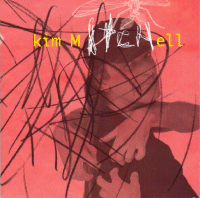
Itch
Itch (Latin: pruritus) is a sensation that causes the desire or reflex to scratch. Itch has resisted many attempts to classify it as any one type of sensory experience. Modern science has shown that itch has many similarities to pain, and while both are unpleasant sensory experiences, their behavioral response patterns are different. Pain creates a withdrawal reflex, whereas itch leads to a scratch reflex.
Unmyelinated nerve fibers for itch and pain both originate in the skin; however, information for them is conveyed centrally in two distinct systems that both use the same nerve bundle and spinothalamic tract.
Signs and symptoms
Pain and itch have very different behavioral response patterns. Pain evokes a withdrawal reflex, which leads to retraction and therefore a reaction trying to protect an endangered part of the body. Itch in contrast creates a scratch reflex, which draws one to the affected skin site. Itch generates stimulus of a foreign object underneath or upon the skin and also the urge to remove it. For example, responding to a local itch sensation is an effective way to remove insects from one's skin.
Itch (disambiguation)
An itch is an unpleasant sensation that evokes the desire or reflex to scratch
Itch or Itching may also refer to:
See also

Itch (Kim Mitchell album)
Itch is the sixth album from Canadian singer and guitarist Kim Mitchell. The album was released in 1994. This would be the last album to date that Mitchell would collaborate with lyricist Pye Dubois. Dubois didn't contribute any lyrics to Mitchell's previous album Aural Fixations released two years before this album.
Track listing
Personnel
List of highways numbered 981
A List of highways numbered 981:
Canada
United States
309 Road
The 309 road is a 22-kilometre (14 mi) long gravel road between the towns of Coromandel and Whitianga in New Zealand.
The 309 winds its way from Coromandel, on the west side of the Coromandel Peninsula, over the ranges to Whitianga, on the eastern side.
The road is considered extremely dangerous and deaths among tourists unfamiliar with the road and in unfit vehicles are common.
Places of interest along the road include Waiau Falls and the Kauri Grove, a stand of mature kauri trees.
Location
References
External links
Coordinates: 36°50′48″S 175°33′15″E / 36.846767°S 175.554208°E / -36.846767; 175.554208 (309 Road - nominal location)

2+2 road
A 2+2 road is a specific type of dual-carriageway being built in Ireland and in Sweden and in Finland, consisting of two lanes in each direction separated by a steel cable barrier.
These roads do not have hard shoulders and therefore they cannot be designated as Motorway at some future date. The Irish variant,however, has 3.5m lanes where there are a number of Swedish variants some with 3.25m wide lanes.
Junctions are generally at-grade roundabouts and minor roads cross under or over the mainline without connecting. They are also known as "Type 2 dual-carriageways" by the Irish National Roads Authority. These roads look similar to expressways, except that expressways often have interchanges, large medians or concrete barriers between traffic. The United States has 80,000 km of roads that fit this description.
First 2+2
The first road of this type opened in December 2007 as a new greenfield section of the N4 national primary route which joins Dublin to Sligo.
See also
Podcasts:

